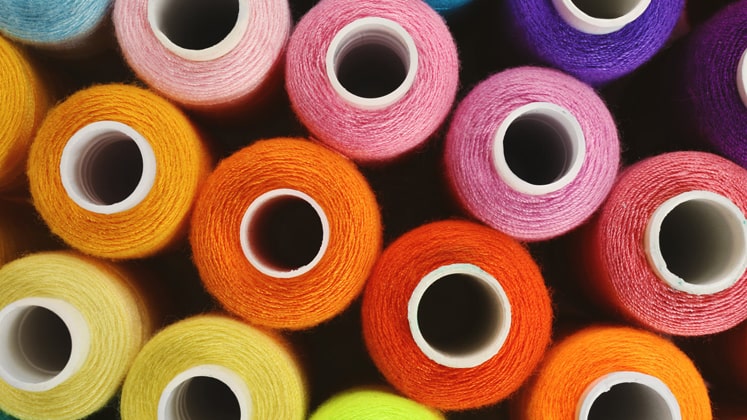Recently Government of India approved the Production Linked Incentive (PLI) scheme of Rs. 1,45,980 crore for ten key sectors including textiles. Credit Suisse (investment bank) estimates that the PLI scheme can generate US $ 150 billion in incremental sales by the financial year 2027, adding up to 1.7 per cent to the GDP by FY ’27. The scheme based on disadvantage/disability faced by a sector is a kind of subsidy to the sector and direct payment from the budget to goods made in India. It aims to give companies incentives on incremental sales from products manufactured in domestic units. Though experts also claim that the PLI scheme is a focused scheme, it is not an investment subsidy scheme.
As far as the textile industry is concerned, the manufacturers producing man-made fibres (MMF) and technical textiles (industrial application) shall be given an incentive by the centre from a corpus of Rs. 10,683 crore over 5 years. The objective of the scheme is to promote the building of new facilities and attract investment in the MMF sector under Greenfield and Brownfield investments.
The scheme will be implemented by the Ministry of Textiles (MoT) in the textile sector and the Textiles Ministry has said that MoT is bringing to fore a structure under which this scheme will be rolled out.
As per understanding, MoT has identified 50 key sectors like sanitary pads, tampons, sweaters and jerseys, within which it aims to introduce the PLI scheme.
If market sources are to be believed, the scheme will offer three categories on which incentives will be provided, for already active players in the bracket of Rs. 100-400 crore and over Rs. 400 crore of net turnover exists.
The idea is that if the company in the first category receives a 50 per cent incremental turnover, they will be provided with 9 per cent seed funding from the Government. For the second category, 7 per cent on net incremental turnover will be disbursed. The base year to determine the net incremental turnover will be 2019-20 and the scheme is likely to come into effect from 2022.
While for new companies venturing into textiles, a category called Greenfield will apply, these companies will have to make at least a Rs. 500 crore investment, on which the gains would be 11 per cent to start with.
The guidelines regarding the scheme will be issued by MoT and the proposal will be approved by the cabinet after appraisal by the expenditure finance committee.
Nearly all the stakeholders of the industry feel that the PLI scheme will attract large investment in the sector to further boost domestic manufacturing, especially in the MMF segment and technical textiles.
All in all, the scheme will attract foreign investment, helping local manufacturers achieve scale, and making Indian exports competitive. It aims to enhance exports and make India an integral part of the global supply chain.
Due to lack of size and scale, cost disadvantages often accrue and this is where the Indian industry has been held back. This scheme can play a decisive role in this regard as by incentivising production, the scheme spurs investment as well.
Besides, it will play a huge role in achieving size and scale in manufacturing, as these schemes incentivise incremental production. As per industry estimates, this scheme is likely to create 50-60 world-class global champion companies in MMF and technical textiles segments. As per industry insiders, some of the companies are aggressively looking to take its advantage; for example, leading textile player Indo Rama Synthetics (India) Ltd. is likely to set up additional capacity to utilise benefits under the PLI scheme.
At the same time, the MSME sector is also expected to get benefit of this scheme.
Amitabh Kant, CEO of NITI Aayog believes that the incentives will raise the competitiveness of not just large firms, but also of all firms across the value chain. As a large company will benefit from the PLI scheme, naturally, the orders of its MSME suppliers will also increase.
The industry believes that it will be instrumental in enhancing India’s manufacturing capabilities and exports enabling Atmanirbhar Bharat Abhiyan Scheme. It has been termed as a much-needed step as it will further fuel the V-shaped recovery in the apparel sector. The scheme will give a big boost to exports, investments, domestic capacity and employment.
This will go a long way in encouraging apparel exporters to foray into MMF garments for which there is a huge demand globally but for which exports from India are currently low. The impact of this stimulus in generating job opportunities will be maximum in the labour-intensive apparel sector.
Around 40 HS lines in MMF garments and 10 HS lines in technical textiles’ account around US $ 180 billion global trade and, therefore, the scheme would encourage the industry to invest in the manufacturing of these high value-added products.
As India has been lagging in the MMF textile trade due to expensive raw materials and high tariff barriers apart from cheaper imports from neighbouring countries, the focus of the PLI scheme on MMF seems impressive. But other segments are totally ignored in this scheme.
The cotton textile is excluded from this scheme. Industry stakeholders are of the view that India’s cotton exports contracted 18 per cent last year. Isn’t it a clear message that the cotton segment is not a priority for the Government?
“It’s for new high potential areas that is understandable – this being tuned for big players only is disappointing but guess Government’s objective is to incentivise for large investments,” said one of the leading textile players who is associated with leading trade bodies also.
Shankar Acharya, Former Chief Economic Advisor, Government of India has few apprehensions about this scheme and one of them is that if each PLI scheme is to be run by different ministries, it’s easy to envisage a hydra-headed bureaucracy.
The detailed instructions, minute description of goods, ceiling for every company, etc., regarding the scheme will be interesting to see and the detailed assessment of its merits would need a study of the guidelines that are yet to be notified. The Government is working towards notifying this scheme for newly added sectors by April 2021. But one must expect that it will really benefit the MMF and technical textile sector as both are full of opportunities in export and domestic market.







